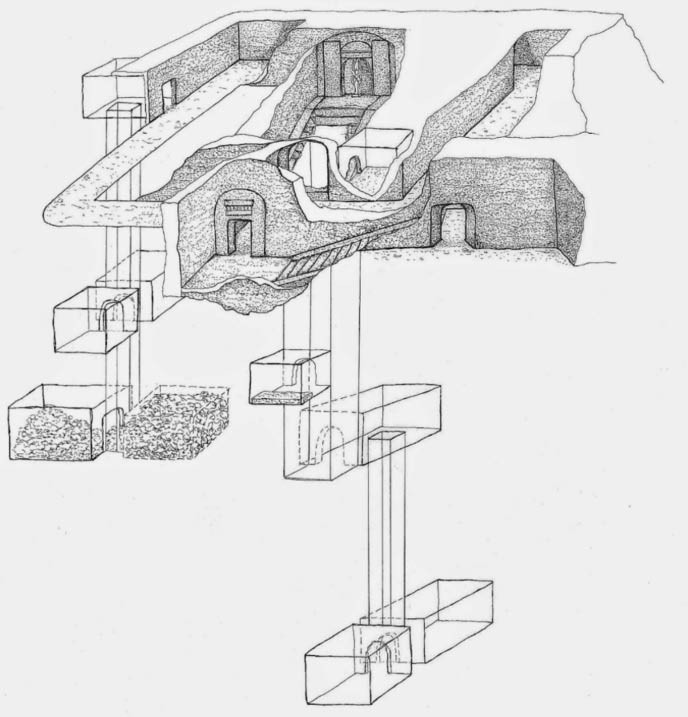Tomb of Osiris discovered at Luxor: The legend of ancient Egypt's god of the dead
Over the weekend, the news broke that a 3,200-year-old reproduction of the mythical tomb of Osiris had been found in Sheikh Abd el-Gourna, a necropolis on the West Bank of Thebes.
The tomb, known as Kampp -327-, is shrouded in mystery as it is not known who it was made for (there are no inscriptions in the tomb at all) and was never documented by explorers during the 20<sup>th century, according to Luxor Times.

The tomb consists of transversal hall that is supported by five pillars, as well as a staircase that goes down into the bedrock to a complex dedicated to Osiris.
It was discovered by the Min Project, an Italian-Spanish initiative in cooperation with the Egyptian government that aims to study New Kingdom tombs in Thebes, namely a private tomb TT109 (also known as the Tomb of Min) and Kampp -327-, which is an extension of the original tomb.
The myth of Osiris, first Pharaoh of Egypt
In Ancient Egyptian mythology, Osiris was the first ever Pharaoh. Osiris was murdered by his brother Seth, the god of disorder and chaos.
Seth locked Osiris in a box, poured molten lead into it and then threw it into the Nile. Isis, Osiris' wife and the goddess of magic, eventually found the box and recovered Osiris' body, but then Seth, re-incarnated as a crocodile, ripped Osiris' body into 14 pieces and scattered them across Egypt.

Isis tracked down all the pieces and buried each piece where she found it, and erected a shrine in that place, which is why Osiris has numerous tombs in Egypt.
At least two other depictions of the myth of Osiris are known to exist – one located 95ft below the back of the Great Sphinx at Giza, while the other is the Osireion, located at the Temple of Seti I in Abydos.
The other interesting fact about the tomb is that it is a recreation of the important test that each ancient Egyptian had to face at the end of his life – the weighing of the heart, as documented in Chapter 125 of the Book of the Dead.
Maat – Weighing of the heart

The ancient Egyptians believed that when they died, their lifetime's worth of deeds would be judged before Osiris, the god of the dead and the afterlife, and a tribunal of 43 deities.
During the ritual, the heart of the deceased was weighed on a pair of scales against a feather, which represents Maat, the principle of truth and justice that all people in ancient Egypt strived to live by, from the Pharaoh down to the most humble beggar.
If the heart balanced against the feather, this meant that the deceased had led a righteous life, and would thus be granted a place in the Fields of Hetep and Iaru (the Egyptian version of Heaven, where everyone could live in a beautiful, prosperous land of plenty for eternity).
However if the heart was heavy with the weight of wrongdoings, the balance would sink and the heart of the deceased would be devoured by Ammit the gobbler, a monstrous beast that was a cross between a crocodile, a lion and a hippopotamus.

© Copyright IBTimes 2025. All rights reserved.






















